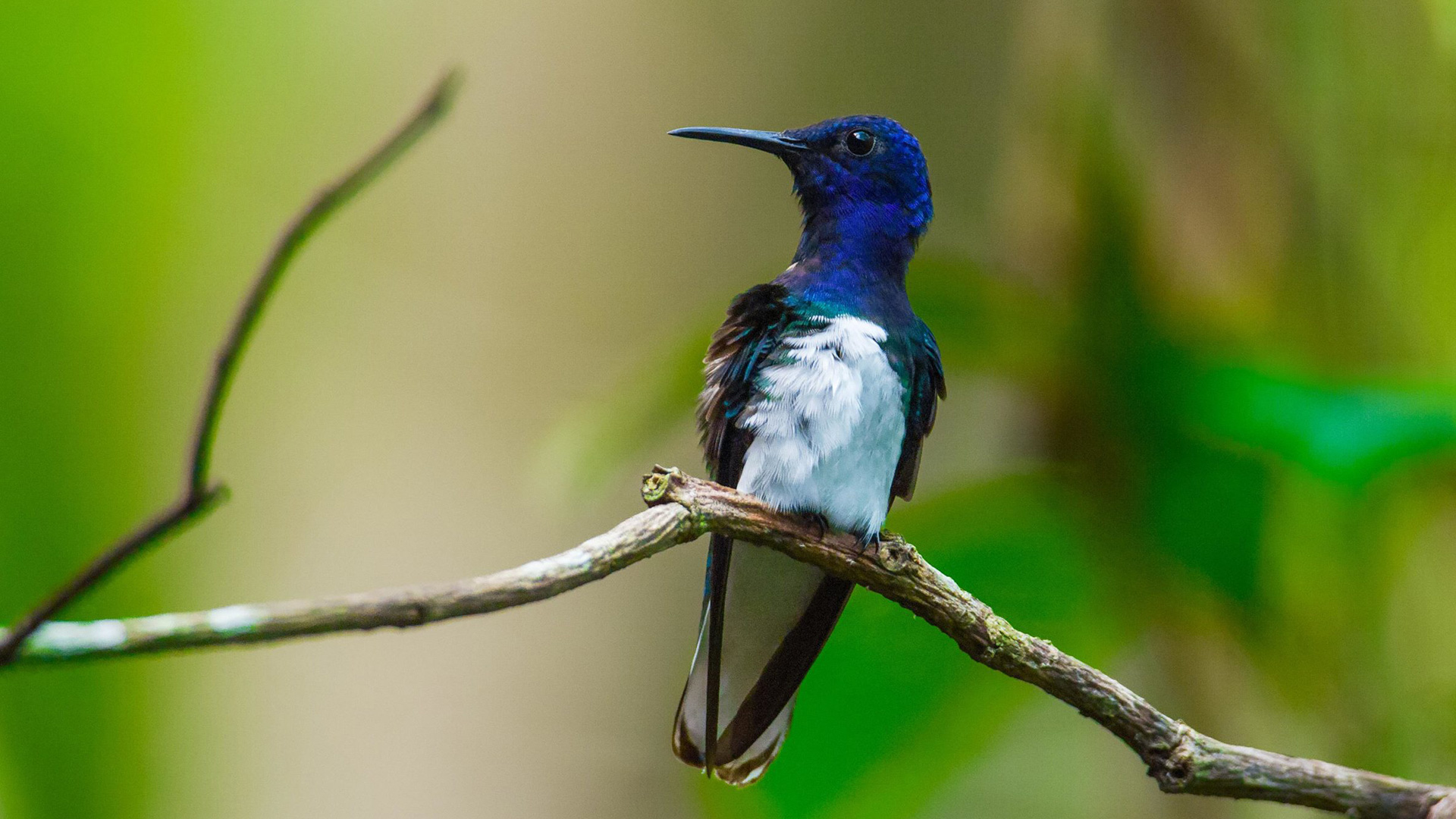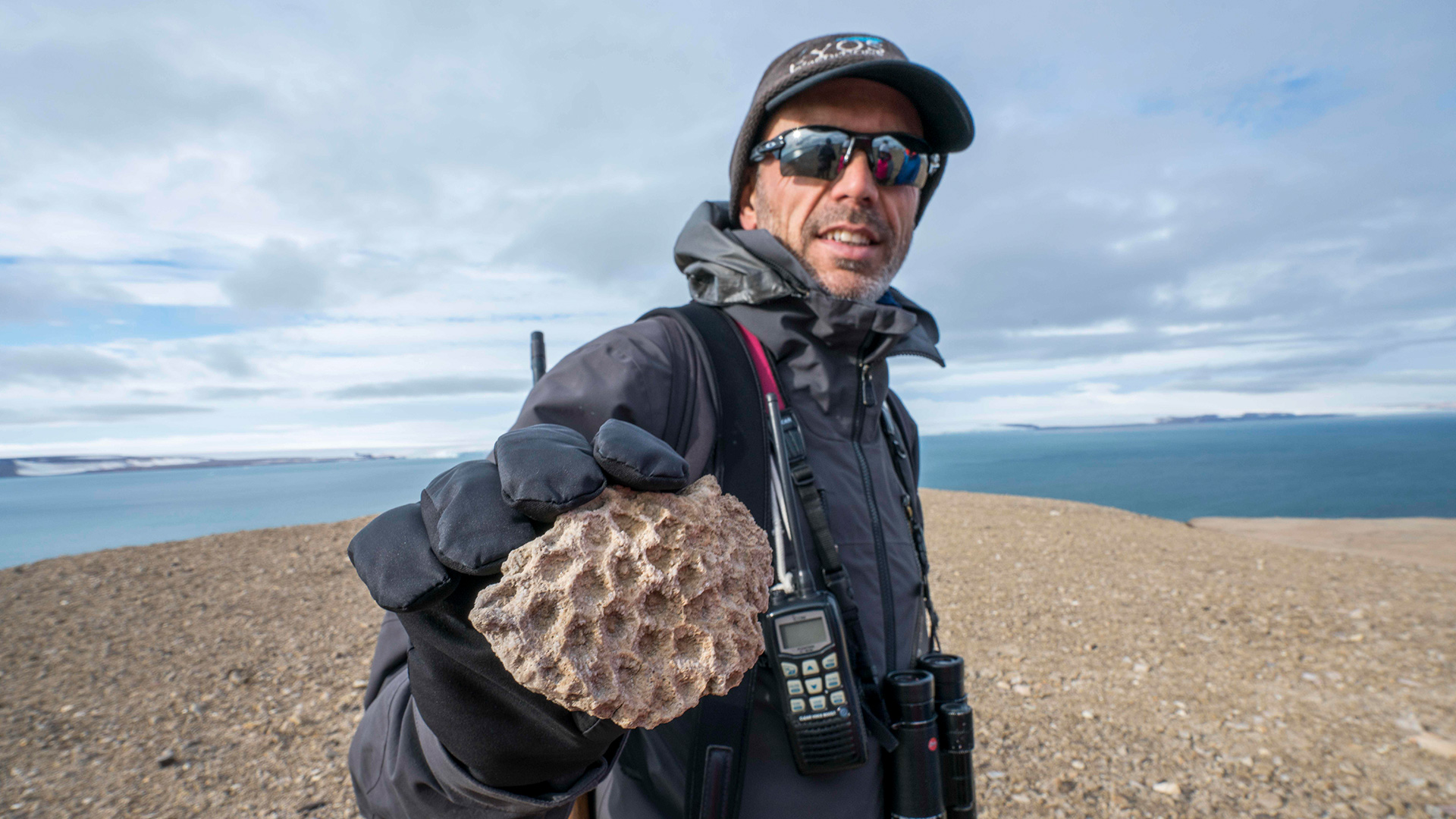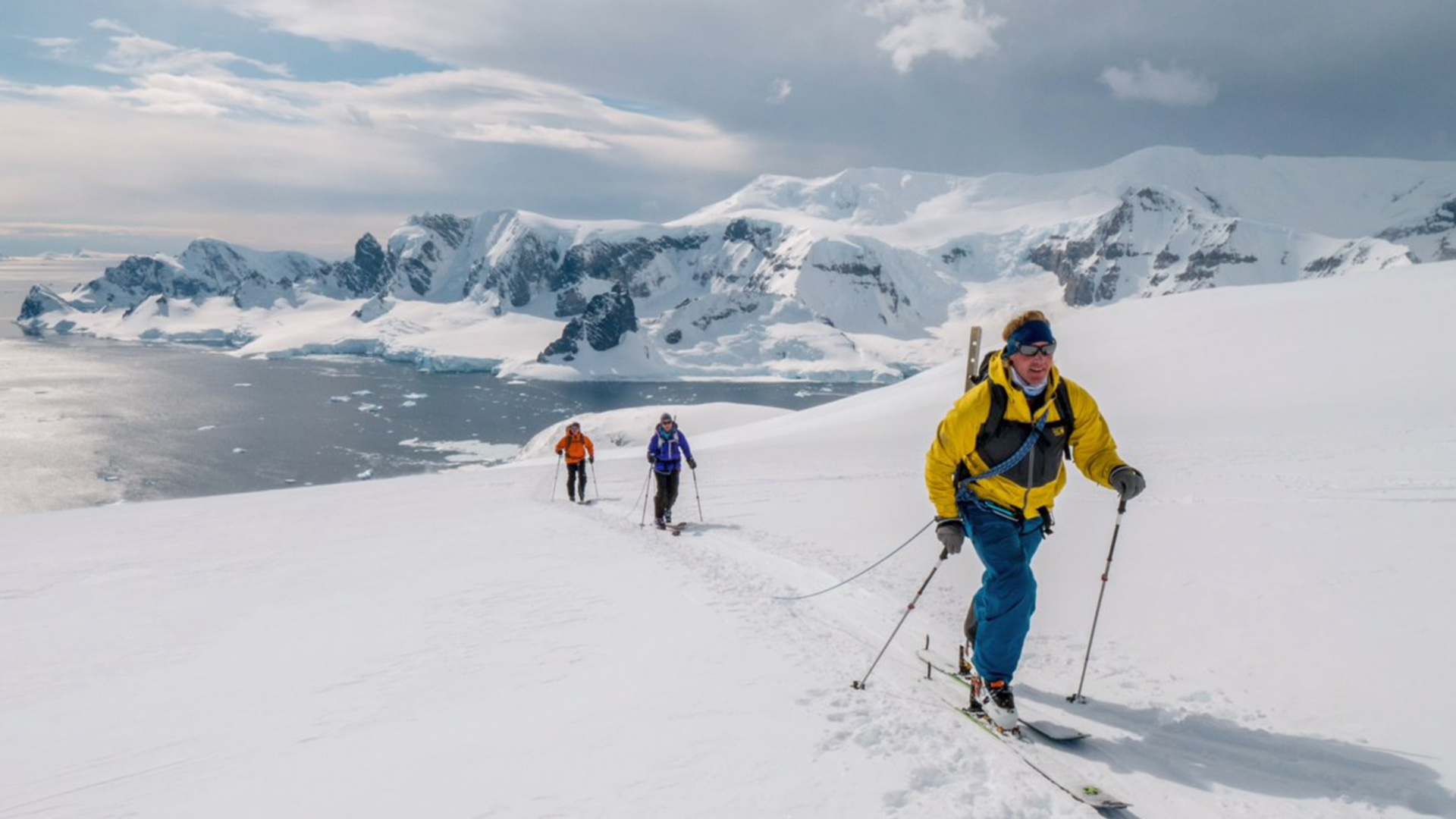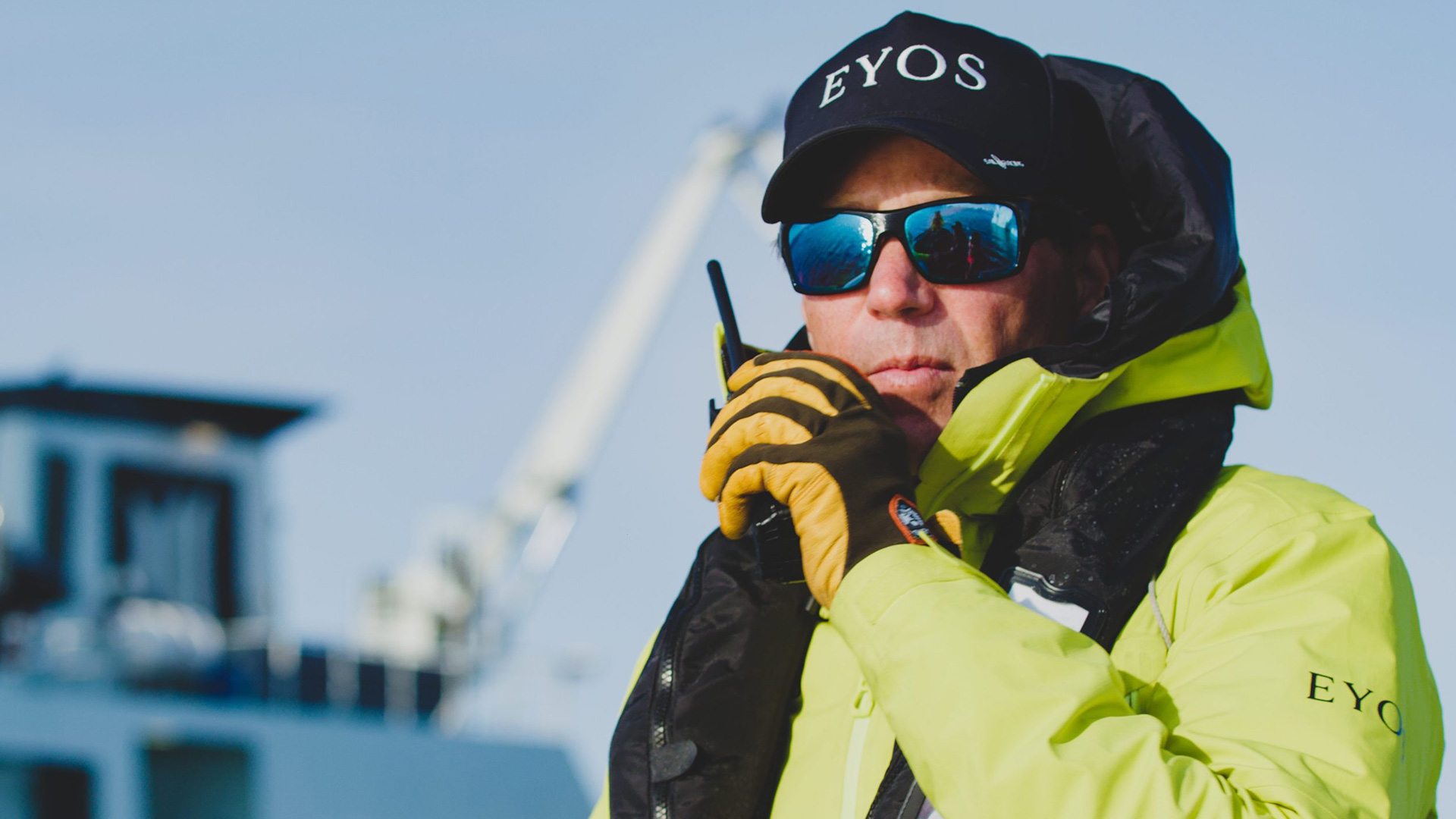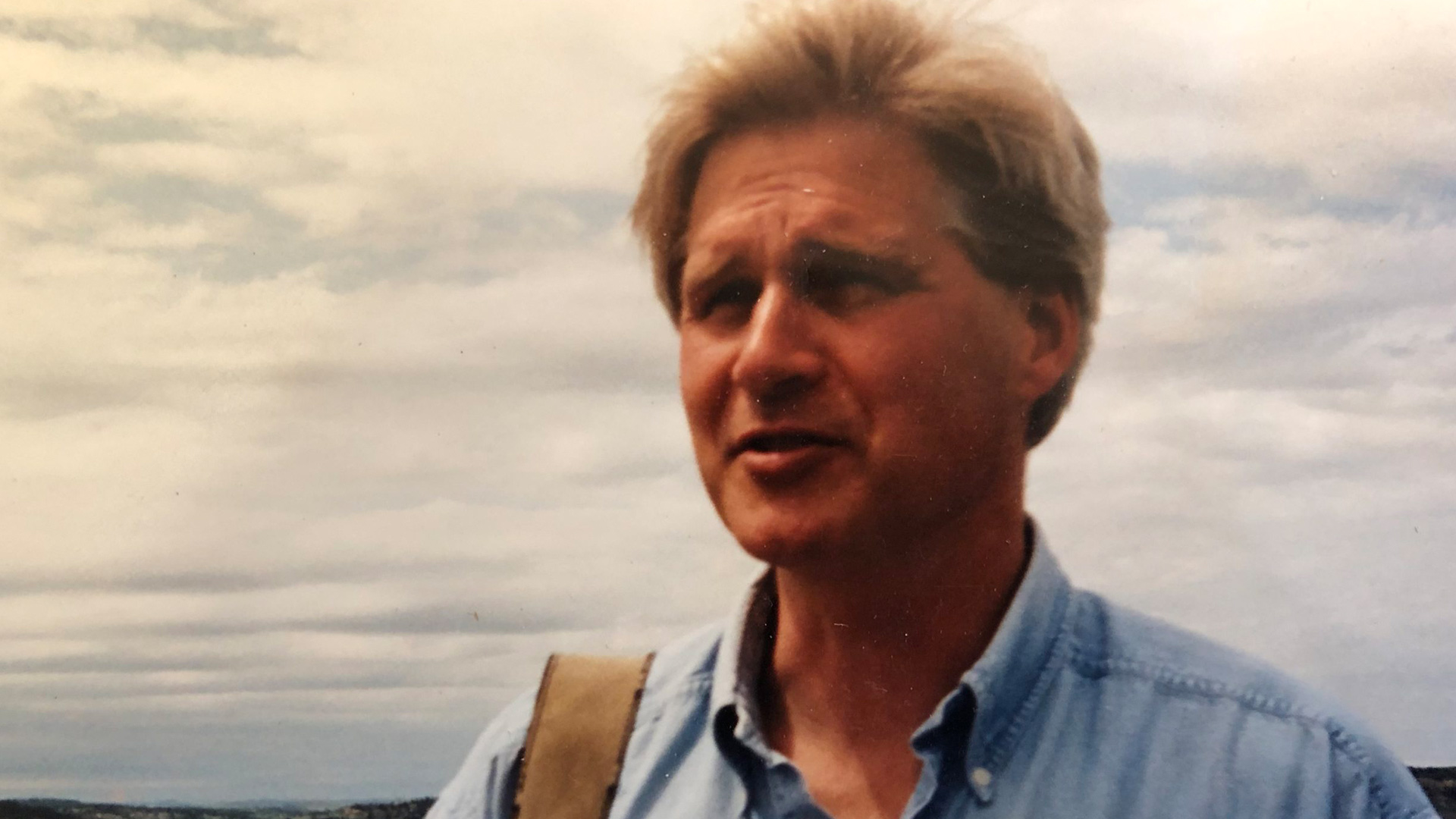EYOS Expedition Leader Richard White is one of the most experienced birders in the world. In honor of Global Big Day, we spoke with Richard for this month’s Staff Spotlight series about his extensive background and his favorite birding spots.
Can you introduce yourself and explain your journey to becoming an expedition leader with EYOS? How did you get your start in expedition travel?
My name is Richard White and I am man Expedition Leader and wildlife guide with EYOS Expeditions. While I am a seabird biologist by training, birding and general natural history is my passion. My “career” as a seabird biologist had me working on ships and visiting small, remote, islands all over the world. The perfect introduction to expedition travel, so it was a logical (sideways) step from one to the other.
You’ve been lucky to travel to some of the world’s most remote destinations. What draws you to these places? What are some moments you take back home with you?
I have been very lucky. I think that at some point we’ll look back on this period as a golden age of travel. Part of the draw for these destinations is simply the challenge involved in getting there. The journey is important as well as the destination. The main draw is that, to generalize, more remote equals more unspoiled from an environmental and wildlife perspective. So some of the best wildlife experiences are in those places that are hardest to reach.
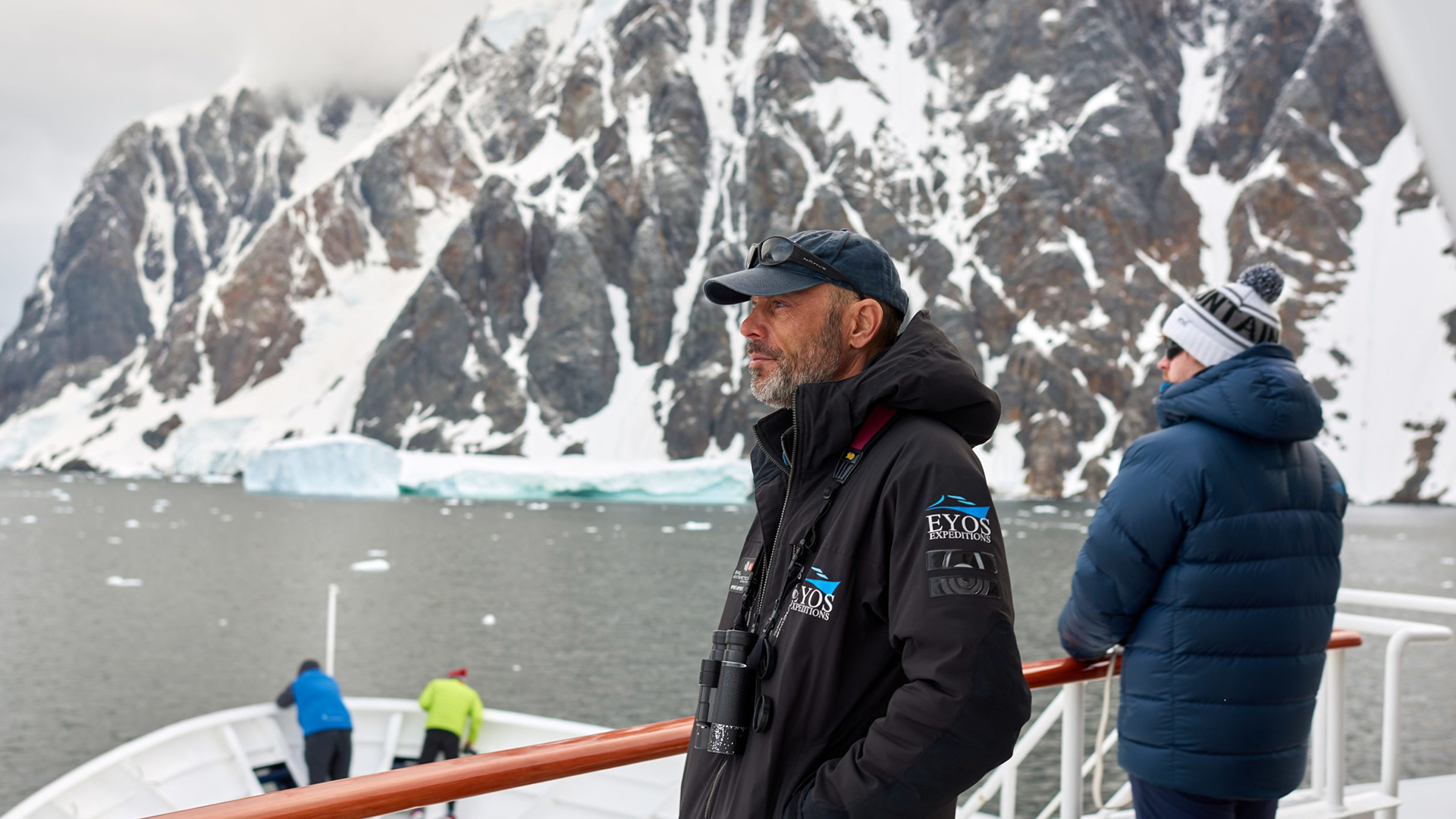
In your opinion, what are the necessary elements of a great expedition? How does EYOS provide these?
The main element of an expedition for me is a sense of surprise – that we genuinely don’t know exactly what is going to happen next. I’m sometimes envious of guides working as historians and geologists – their subject matter doesn’t vary so much from one trip to the next. For example – in Antarctica, we can go to Deception Island, an active volcano that last erupted in 1969/70. It’s an interesting destination, and taking a superyacht into the flooded caldera of an active volcano is an amazing this to do. But it’s reliable (unless the volcano goes off again!). That experience can’t compare with the spontaneity and excitement of a Killer whale sighting (unless the volcano goes off again!). It’s the spontaneous type of experience that I think EYOS offers and delivers better than our competitors.
Within the guiding and birding community, you are respected as one of the best. You have also proclaimed to have birded nearly every day for the past 25 years. What is it about birds and their natural history that excites you?
Thank you. As you mention, I bird continuously. And this is one of the best things about birds – they are everywhere (although rarely at the South Pole and not in space). So no matter where I am, I see birds. I can bird every day, at different levels of intensity depending on where I am. Right now I can look out of the window and see birds. It’s not as easy if your interest is snakes for example, or SCUBA diving. Aside from their ubiquity, they also have great geographical diversity. As a result, looking at birds can give you a sense of place and I associate certain species, and sightings, with locations.
What has been the ultimate birding destination you’ve visited so far? What did you see there that was so noteworthy?
I’m not sure I have found the ultimate birding destination. That would suggest I have to keep looking?
May 13 was Global Big Day, the Cornell Lab or Ornithology’s annual 24-hour birding marathon that celebrates diversity around the world. Where were you for Big Day and what did you hope to see?
I’m in Singapore for the Global Big Day. It’s not the best season for birding here although there have been some rare vagrants such as a White-crowned hornbill recently. I’ll be mainly ‘balcony birding’ – looking at the trees near my apartment. We’re lucky to have the Critically Endangered Straw-headed bulbul living nearby – that’s likely to be the best bird I see on the day.
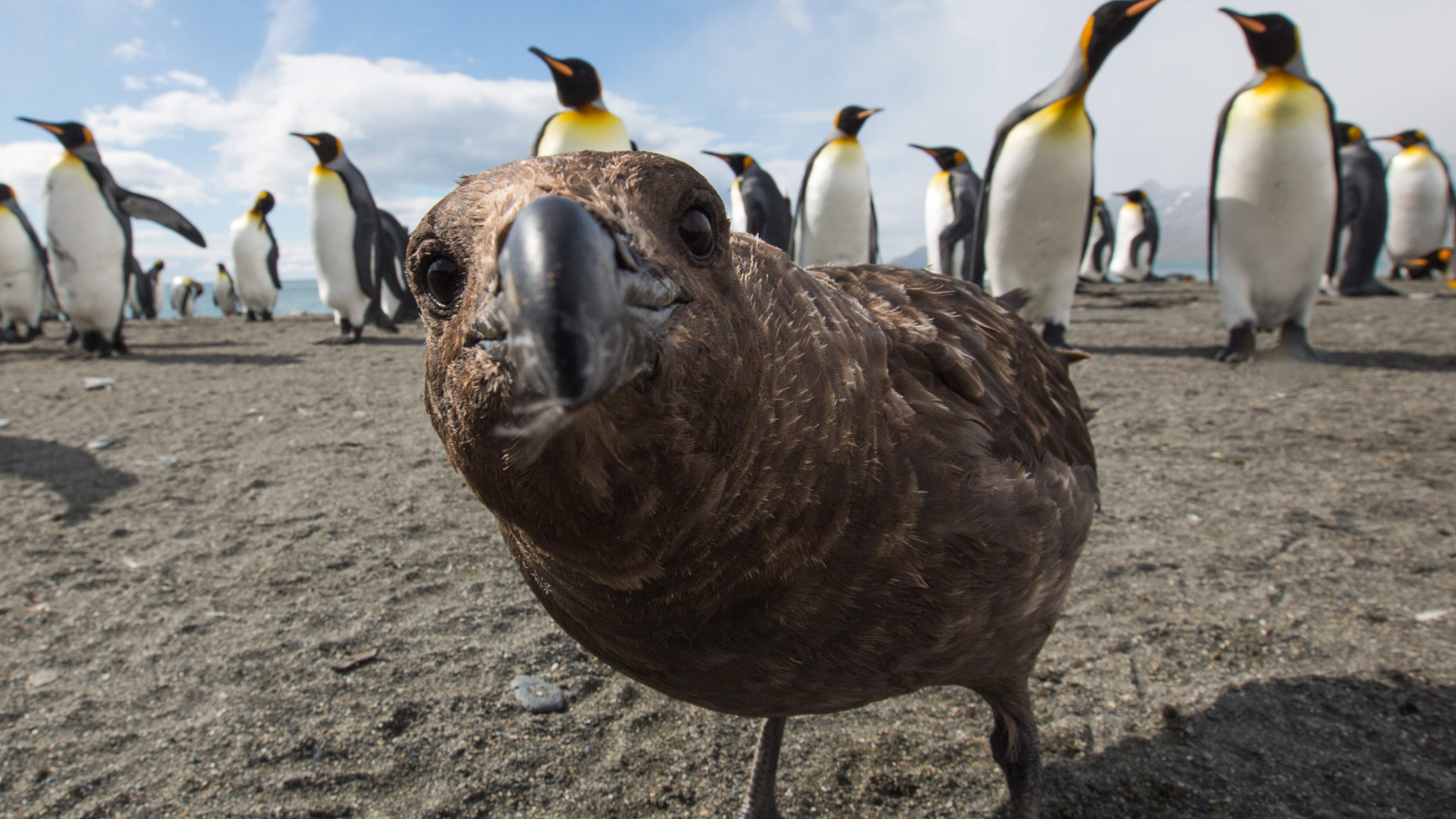
Studies suggest that 49% of the world’s bird species are experiencing population declines. What are the challenges to conservation and what do you see on the road ahead for our global bird species? Are there any species whose story inspires you?
There are so many challenges to bird conservation, which are better viewed as challenges to wildlife and environmental conservation as a whole. A growing human population on the planet and apparently insatiable demand for resources leave less space for wildlife. I’m not optimistic about the future of bird populations – it’s clear that this is not a priority for politicians and businesses and as such further declines seem inevitable. Within that gloomy outlook, there are of course success stories. One such is the South Georgia pipit – a classic “little brown job” that lives on the remote sub-Antarctic island of South Georgia. This is a classic expedition ship destination – a firm favorite with wildlife enthusiasts who are drawn by massive King penguin colonies and thousands of Southern elephant seals and millions of Antarctic fur seals. Amid all that abundance is a little brown songbird that lives on South Georgia and nowhere else. A multi-million-pound project to remove non-native rats from South Georgia was successfully completed recently. The seabirds on the island are the main beneficiary of the project, but the pipits have also done very well in the absence of rats and are now everywhere rather than restricted to the few rat-free areas where they previously found refuge.
You’ve already broken boundaries and explored much of the world. What’s next? What expeditions are you looking forward to with EYOS?
I’ve spent many seasons around the coast of Antarctica but I have never been to the interior. Partly this is because there’s not much wildlife there so it’s never been much of a draw. However, I’d like to see the landscapes and I’m curious about that lack of wildlife. Intellectually I understand it, but I’d like to experience it as well. I think this is one of the things that draws us to travel and the remote places EYOS goes to.
